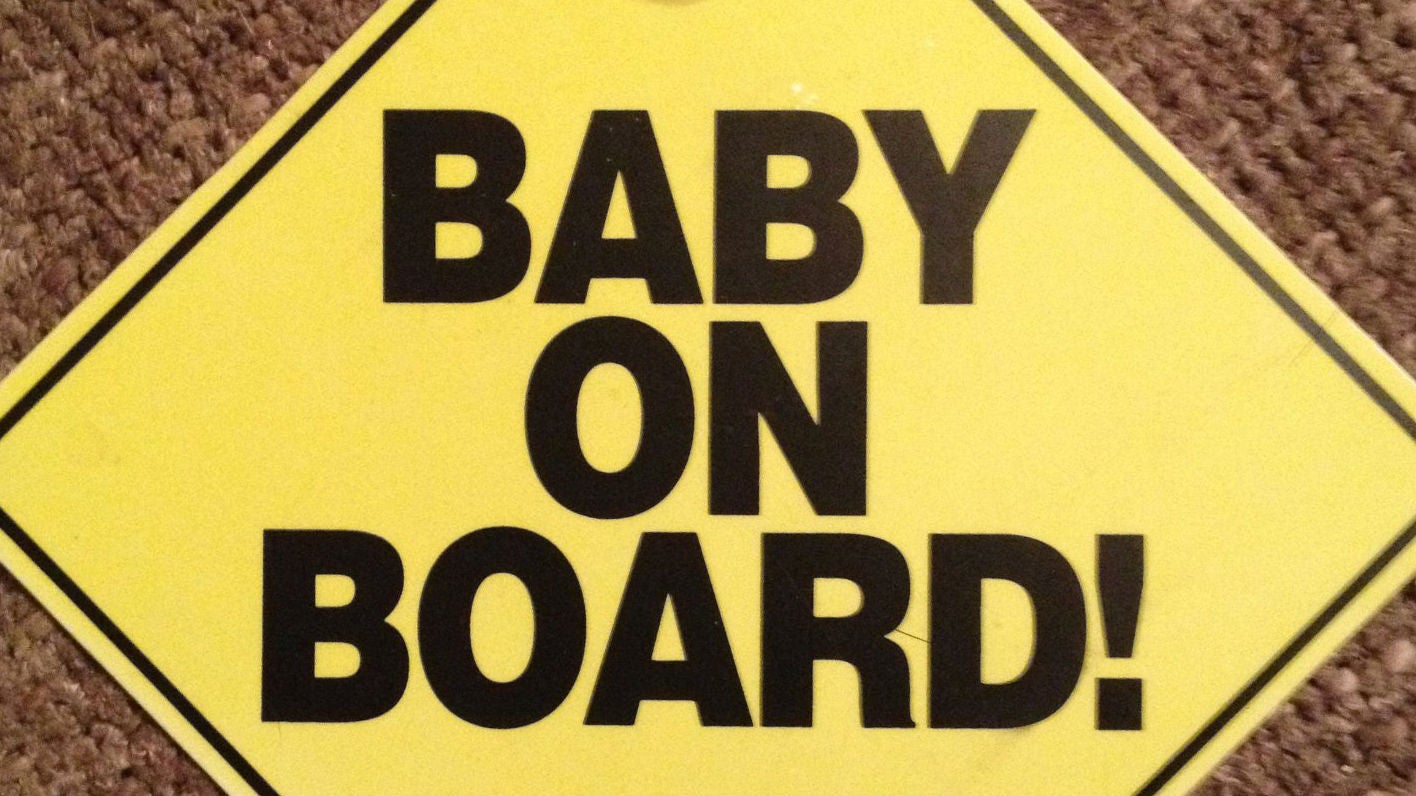You probably don’t know the real story behind Baby on Board signs
In a recent piece about American parenting and its effects on marriages, Danielle and Astro Tellers semi-jokingly attribute the origin of elevating children to gods—and parenting to a religion—to one viral object: the “Baby on Board“ sign.


In a recent piece about American parenting and its effects on marriages, Danielle and Astro Tellers semi-jokingly attribute the origin of elevating children to gods—and parenting to a religion—to one viral object: the “Baby on Board“ sign.
Whether or not the sign can be used as the ultimate testimony of an unhealthy obsession with one’s children, there are a enough legends surrounding its creation and use to prompt a little record-setting.
It is common belief that the sign was created so that, in the event of an accident, the emergency workers would know to look for an infant.
“I’ve never heard that theory before,” said Paul Maxwell, a paramedics with thirty years experience who runs a child injury prevention organization. “I surveyed my crew and everyone thinks its to warn people to be extra cautious driving behind so as to not crash into them.”
And they are right.
Michael Lerner had the idea of marketing the sign in 1984, right after he drove his 18-month-old nephew home. He realized people were impatient at his driving:
“People were tailgating me and cutting me off,” he says. “For the first time, I felt like a parent feels when they have a kid in the car.”
He partnered with a couple that had been trying to promote the signs and was successful in doing so. Baby on Board became a fad, which he pivoted into a whole company, tapping into the need for well-designed and marketed products for child safety (drawer locks for instance), Lerner founded Safety 1st. The company reached $158 million in sales in 1999 and earned Lerner $38 million when it was acquired by Canadian company Dorel Industries in 2000.
It is possible that the misconceptions about the sign’s origin and purpose come from the fact that Safety 1st, the company that produces the Baby on Board signs, is a maker of other baby products with a focus on safety—from car seats to strollers. But that is not what the signs meant to be for.
Another widely spread legend—somewhat connected with the emergency theory—that the sign was created after a tragic accident:
Years ago, I heard a story about WHY the signs were created but only once, and I wonder if it is true. The story was that a serious car accident occurred and an unconscious woman was removed from the vehicle. The front of the car was badly damaged and it wasn’t until later (vague time frame) that a car seat with a dead infant was discovered under the front dash of the passenger side.
That, too, is—thankfully for the morals of those who’d have turned the tragedy into profit—not how the sign happened.
As it is now, the sign apparently isn’t much more than a novelty item. According to some reports, the signs may end up distracting drivers (and arguably increasing the likelihood of accidents) and slowing down the emergency intervention: drivers admit to often display the signs irrespective of whether their children are on board and emergency personnel may waste time looking for little ones when they are not there, rather then succoring adults.